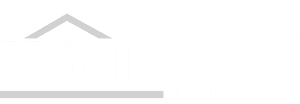Your Complete Metal Roofing Materials Checklist for Central Florida Projects
Your Complete Metal Roofing Materials Checklist for Central Florida Projects
Understanding Central Florida's Unique Roofing Needs
Central Florida’s climate is known for its high humidity, frequent rain, and scorching heat. The region also experiences hurricane season annually, which brings strong winds and heavy rainfall. These environmental factors make it crucial to choose roofing materials that can withstand such conditions. Understanding the local weather patterns is the first step in selecting a durable and reliable metal roof.
These climate challenges directly impact the performance of metal roofing materials. High humidity can lead to corrosion if the wrong materials are used, while hurricanes test the wind resistance and structural integrity of roofs. As a result, homeowners must prioritize materials designed to endure these stresses and ensure long-term protection for their properties.
Essential Materials for Metal Roofing Projects
When planning a metal roofing project, key materials include panels, underlayment , fasteners , sealants, flashing , and ventilation components. Each of these plays a critical role in ensuring the roof performs well and lasts for years. Without the right combination of materials, even the best-installed roof may fail prematurely.
The panels form the outer layer, providing the primary barrier against the elements. Underlayment acts as a secondary waterproofing layer, while fasteners secure everything in place. Sealants prevent leaks at joints, flashing directs water away from vulnerable areas, and ventilation components help regulate temperature and moisture levels. Together, these materials create a robust roofing system tailored to Central Florida’s needs.
Popular Metal Roofing Types and Profiles
There are several popular types of metal roofing materials , including standing seam panels , corrugated panels, tiles, and shingles. Each type has its own unique appearance and functionality, making it important to choose one that suits both your aesthetic preferences and practical requirements.
In Central Florida, standing seam panels are highly favored due to their sleek look and excellent wind resistance. Corrugated panels are budget-friendly and durable, while metal tiles mimic traditional clay tiles and blend well with Florida architecture. Shingles offer a more conventional appearance but still provide the benefits of metal. Each option has pros and cons, so consider factors like cost, durability, and style when making your decision.
Choosing the Right Metal: Material Options and Price Ranges
Several metals are commonly used for roofing in Central Florida, including aluminum, steel, galvalume , copper, zinc, and tin. Aluminum is lightweight and corrosion-resistant, making it ideal for coastal areas. Steel is strong and affordable but requires coatings to resist rust. Galvalume combines aluminum and zinc for enhanced durability, while copper and zinc offer premium aesthetics and longevity.
Prices vary widely depending on the material. Aluminum typically costs between $4 and $8 per square foot, while steel ranges from $3 to $7. Copper and zinc are significantly more expensive, often exceeding $10 per square foot. Durability and corrosion resistance should guide your choice, especially in humid and salty environments like Central Florida.
Understanding Florida Building Codes and Approvals
Compliance with the Florida Building Code (FBC) is essential for any roofing project in the state. This code ensures that roofs can withstand hurricanes, high winds, and other extreme weather events. Ignoring these regulations can lead to costly repairs or even legal issues down the line.
Key requirements include using corrosion-resistant materials, adhering to strict installation standards, and ensuring products have proper approval numbers. Miami-Dade NOA (Notice of Acceptance) certification is particularly important for hurricane-prone areas. Working with approved suppliers and contractors will help guarantee your roof meets all necessary codes and performs reliably.
Protective Coatings and Finishes for Longevity
Metal roofs benefit greatly from protective coatings like PVDF (polyvinylidene fluoride) and SMP (silicone-modified polyester). These coatings enhance color retention, resist fading, and provide superior weather protection. In sunny Central Florida, where UV exposure is intense, choosing the right finish can significantly extend the life of your roof.
Besides durability, coatings also offer aesthetic options, allowing homeowners to customize their roofs with various colors and finishes. Whether you prefer a bold hue or a neutral tone, modern coatings ensure your roof looks great while standing up to the elements year after year.
Energy Efficiency and Environmental Benefits
Metal roofs are highly energy-efficient because they reflect sunlight and reduce heat absorption. This reflective quality helps lower cooling costs during Florida’s hot summers, making them an eco-friendly choice for homeowners looking to save on energy bills.
Additionally, many metal roofs qualify as “cool roofs,” which are designed to minimize heat transfer. They are also fully recyclable, reducing waste and environmental impact. By choosing a metal roof, you’re not only investing in your home’s comfort but also contributing to a greener planet.
Hurricane and Wind Uplift Considerations
In hurricane-prone areas like Central Florida, wind-resistant installation techniques are vital. Features such as concealed fasteners , reinforced seams, and proper anchoring help prevent uplift and damage during storms. Homeowners should prioritize materials and methods specifically engineered for high-wind zones.
Regular inspections and reinforcements are equally important. After installation, schedule periodic checks to ensure all components remain secure. If you notice any signs of wear or damage, address them promptly to maintain the roof’s integrity and safety.
Planning and Ordering: Step-by-Step Materials Checklist
Before ordering materials, measure your roof accurately to calculate the required quantities. Start by determining the total square footage and adding 10-15% extra for waste and cuts. Proper measurements ensure you don’t run short or over-order supplies.
Your materials checklist should include panels, underlayment , fasteners , sealants, flashing , and ventilation components. Double-check dimensions and specifications to avoid mistakes. Common errors include miscalculating quantities or forgetting small but essential items like trim pieces. A thorough checklist minimizes delays and keeps your project on track.
Working with Local Suppliers and Contractors
Choosing experienced suppliers and contractors familiar with Central Florida’s unique challenges is crucial. Look for professionals who understand local building codes and have a proven track record of successful installations. Ask for references and review past projects to gauge their expertise.
Verify that the products they supply meet Florida’s stringent approval standards. Experienced contractors will also ensure proper installation techniques are followed, maximizing the lifespan and performance of your roof. Partnering with knowledgeable experts gives you peace of mind throughout the process.
Maintenance Tips for Central Florida Metal Roofs
Routine maintenance is key to keeping your metal roof in top condition. Regularly inspect for loose fasteners , damaged coatings, and debris buildup. Clean the surface periodically to remove dirt, leaves, and other obstructions that could trap moisture.
Pay special attention to potential corrosion spots, especially near coastal areas. After major storms, assess your roof for any signs of damage. Promptly addressing minor issues prevents them from escalating into costly repairs, ensuring your roof remains functional and attractive for years.
Troubleshooting Common Issues
Common problems with metal roofs include leaks, rust, loose panels, and fading. Leaks often occur around fasteners or flashing , while rust develops if protective coatings fail. Loose panels may result from improper installation or storm damage, and fading happens due to prolonged sun exposure.
Simple DIY fixes, like tightening loose screws or applying touch-up paint, can resolve minor issues. However, for more complex problems like persistent leaks or extensive rust, it’s best to consult a professional. Timely intervention ensures your roof continues to perform effectively.
Frequently Asked Questions
1. What is the best type of metal roofing material for Central Florida homes?
Aluminum, steel, and galvalume are excellent choices for Central Flint homes due to their corrosion resistance and compliance with local building codes. Aluminum is particularly well-suited for coastal areas, while galvalume offers added strength and longevity.
2. How long does a metal roof typically last in Central Florida?
Metal roofs can last 40 to 70 years, depending on the material and quality of installation. Proper maintenance, protective coatings, and adherence to building codes play significant roles in extending the roof’s lifespan.
3. Are metal roofs noisy during rain or hail?
No, metal roofs are not inherently noisy. Modern underlayment options absorb sound, minimizing noise during rain or hailstorms. Proper installation further reduces unwanted sounds, ensuring a comfortable indoor environment.
4. Is a metal roof more expensive than traditional shingle roofing?
While metal roofs have higher upfront costs, they offer long-term savings through energy efficiency, reduced maintenance, and extended lifespans. Over time, the investment pays off compared to traditional shingle roofs.
5. Do I need special insurance for a metal roof in Florida?
Some insurers offer discounts for metal roofs due to their durability and storm resistance. Check with your provider to see if installing a metal roof qualifies you for reduced premiums or additional coverage benefits.
Conclusion & Key Takeaways
A detailed materials checklist is essential for tackling metal roofing projects in Central Florida’s demanding climate. By prioritizing durable, code-compliant materials, you ensure long-lasting protection, energy savings, and increased property value. Investing in quality materials and expert installation pays dividends in performance and peace of mind.
We encourage readers to create their own materials checklist before starting any roofing project. Consult with approved local suppliers and focus on materials that meet Florida’s building codes and environmental challenges. Using this checklist empowers homeowners and builders to execute safer, smarter roofing projects in Central Florida.

